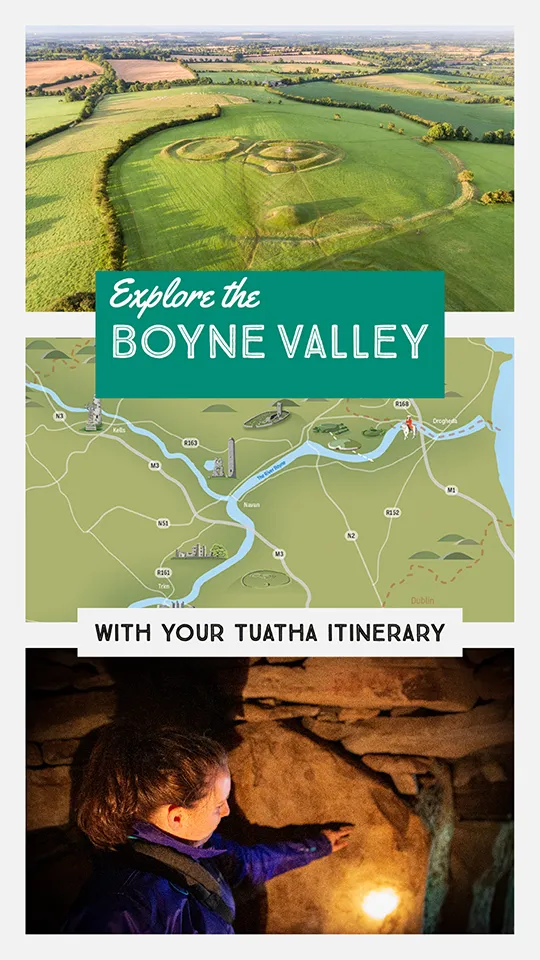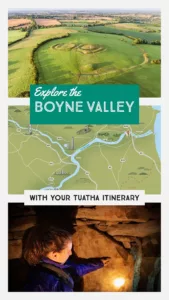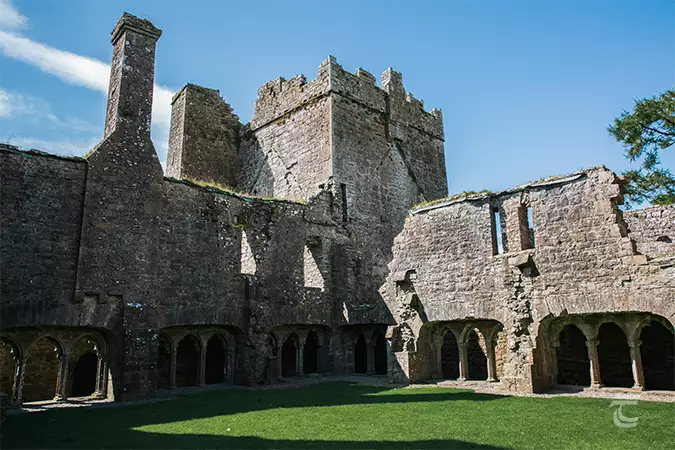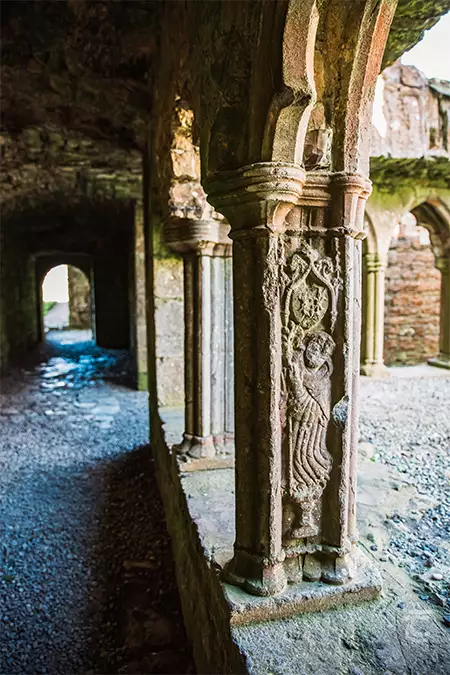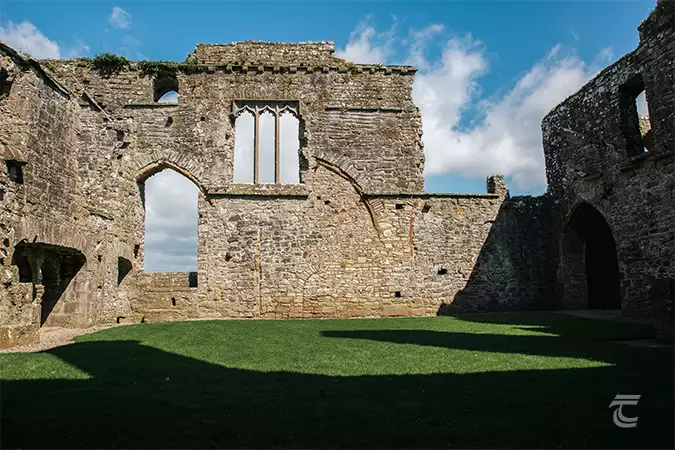Bective Abbey
Bective Abbey was the second Cistercian monastery founded in Ireland and is one of the treasures of the Boyne Valley. It was founded in 1147 by the King of Meath, Murchad Ua Máelsechnaill for the Cistercians. The name Bective derives from the Latin ‘Beatitude Dei’, meaning the ‘Blessedness of God’. It was the ‘daughter house’ of Mellifont, the first Cistercian foundation in Ireland. Unlike many other Cistercian foundations, which typically sought out wilderness and isolation, Bective was positioned on fertile agricultural land, and quickly rose to prominence as an important ecclesiastical centre. Indeed, Bective was of such high status that the powerful Norman Lord of Meath Hugh de Lacy (of Trim Castle) had his body interred (but not his head) at Bective for a while before he was eventually reburied with his head, and his wife’s remains, at St. Thomas’s Abbey in Dublin.
The Cistercian order were founded on work and prayer, and they were innovative farmers. They transformed their holdings in Ireland into highly productive estates By the 16th century, the Cistercians of Bective Abbey had become wealthy from rents, tithes and donations. At the time that Bective was dissolved during the Dissolution of the Monasteries in the middle of the 16th century, it was recorded that the estate of Bective contained 1,580 acres valued at £83 18s 8d. The abbey and its possessions were purchased in 1552 by Andrew Wyse, but he seems to have come into financial difficulties soon after and Bective changed hands a number of times, before being transformed into a manor in the early 17th century. It came into the hands of the Bolton family, and was eventually donated to the state in 1894.
The abbey you can see today is a complex combination of different phases of construction, with additional features, along with areas of rebuilding and repurposing, reflecting more than five centuries of use. Most of the surviving structures, including the fine cloister, date to the 15th century when the abbey was under the patronage of the powerful FitzGeralds. It was at this time that the abbey was fortified, with strong towers constructed to protect the site.
For practical information about visiting this site Click Here
Bective Abbey was the second Cistercian monastery founded in Ireland and is one of the treasures of the Boyne Valley. It was founded in 1147 by the King of Meath, Murchad Ua Máelsechnaill for the Cistercians. The name Bective derives from the Latin ‘Beatitude Dei’, meaning the ‘Blessedness of God’. It was the ‘daughter house’ of Mellifont, the first Cistercian foundation in Ireland. Unlike many other Cistercian foundations, which typically sought out wilderness and isolation, Bective was positioned on fertile agricultural land, and quickly rose to prominence as an important ecclesiastical centre. Indeed, Bective was of such high status that the powerful Norman Lord of Meath Hugh de Lacy (of Trim Castle) had his body interred (but not his head) at Bective for a while before he was eventually reburied with his head, and his wife’s remains, at St. Thomas’s Abbey in Dublin.
The Cistercian order were founded on work and prayer, and they were innovative farmers. They transformed their holdings in Ireland into highly productive estates By the 16th century, the Cistercians of Bective Abbey had become wealthy from rents, tithes and donations. At the time that Bective was dissolved during the Dissolution of the Monasteries in the middle of the 16th century, it was recorded that the estate of Bective contained 1,580 acres valued at £83 18s 8d. The abbey and its possessions were purchased in 1552 by Andrew Wyse, but he seems to have come into financial difficulties soon after and Bective changed hands a number of times, before being transformed into a manor in the early 17th century. It came into the hands of the Bolton family, and was eventually donated to the state in 1894.
The abbey you can see today is a complex combination of different phases of construction, with additional features, along with areas of rebuilding and repurposing, reflecting more than five centuries of use. Most of the surviving structures, including the fine cloister, date to the 15th century when the abbey was under the patronage of the powerful FitzGeralds. It was at this time that the abbey was fortified, with strong towers constructed to protect the site.
For practical information about visiting this site Click Here
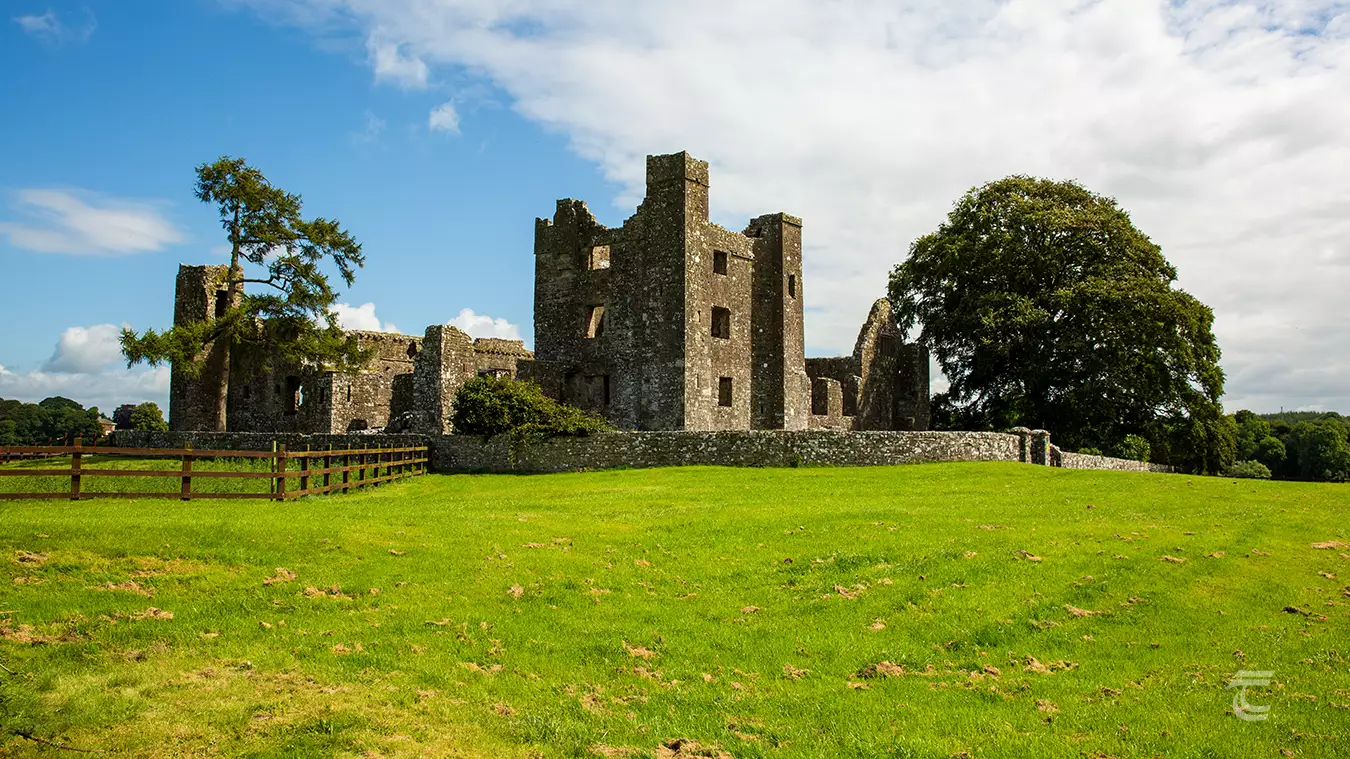
A view of Bective Abbey • Meath
Uncovering the story of Bective Abbey
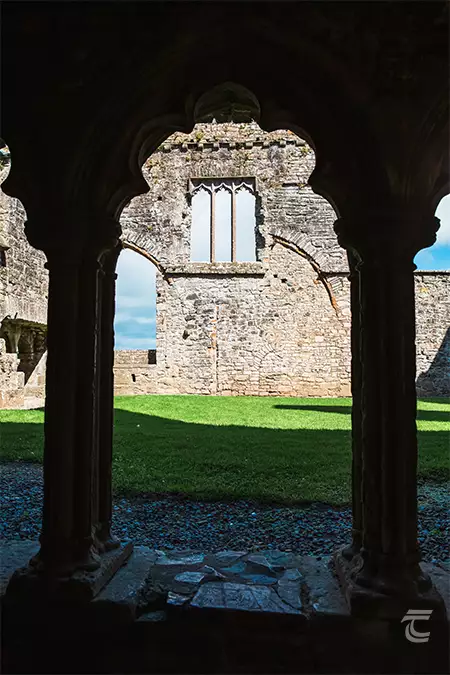
A view into the 15th century cloister • Meath
While living near Bective Abbey, the noted short story writer and novelist, Mary Lavin wrote:
‘Do you know Bective? Like a bird in the nest, it presses close to the soft green mound of the river bank, its handful of houses no more significant by day than the sheep that dot the far fields.’
The extensive ruins that one can explore today at Bective tell the story of both the Cistercian monastic site and the private home. The cloisters are superbly well preserved (and featured in the Mel Gibson film Braveheart).
Bective Abbey was investigated during a series of excavations by Geraldine Stout and Matthew Stout. Their digs revealed the Cistercian’s innovative farming methods, establishing that Bective was a significant agricultural centre for the surrounding hinterland estates. They even found that the abbey had a kitchen garden, with archaeobotanical evidence found herbs and vegetables including cabbage, mustard, dock, sorrel, radishes, pulses and elderberries. All of the results were published in a fascinating book, The Bective Abbey Project: Archaeological Excavations 2009–12. You can hear Geraldine and Matthew discussing Bective and Cistercian agriculture in this episode of our Amplify Archaeology Podcast.

A view into the 15th century cloister • Meath
Upper left: the interior of the 15th century cloister • Lower left: the walls of Bective Abbey have numerous examples of blocked up arches and windows, evidence of the changing use of the buildings over centuries • Right: a carving of Bernard of Clairvaux, one of the key figures of the Cistercian Order
Top: the interior of the 15th century cloister • Middle: a carving of Bernard of Clairvaux, one of the key figures of the Cistercian Order • Bottom: the walls of Bective Abbey have numerous examples of blocked up arches and windows, evidence of the changing use of the buildings over centuries
Explore more sites in Ireland’s Ancient East
